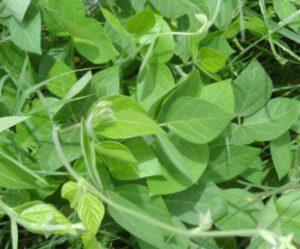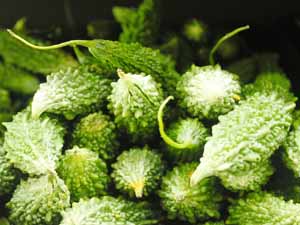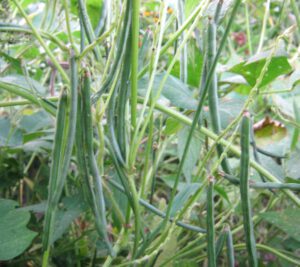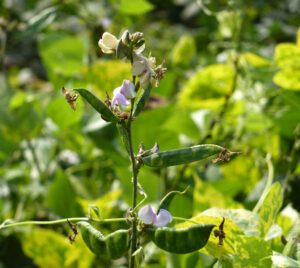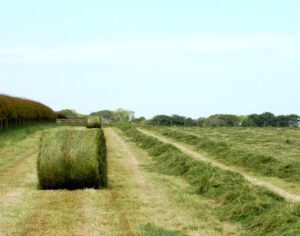Taro farming or taro root farming is a very common and popular business throughout the world. Taro plants grow well and rapidly without much caring and other management. Taro is actually a tropical plant which is grown primarily for it’s edible corms. It is a root vegetable and known by many other names in different parts of the world.
Taro is the most widely cultivated species of several plants in the family Araceae that are used as vegetables for their leaves, corms and petioles. Taro corms are similar to yams and a food staple in African, Oceanic and South Asian cultures. And taro is believed to have been one of the earliest cultivated plants.
Actually, taro can be grown in paddy fields where water is abundant or in upland situations where water is supplied by rainfall or supplemental irrigation. Taro is actually one of the few crops that can be grown under flooded conditions. This is due to air spaces in the petiole, which permit underwater gaseous exchange with the atmosphere.
Like most other root crops, taro do very well in deep, moist or even swampy soils where the annual rainfall exceeds 100 inches. The crop attains maturity within 6-12 months after planting in dry-land cultivation and after 12-15 months in wetland cultivation. Nigeria is the largest producer of taro in the world, at around 3.3 million metric tons production per year.
Uses of Taro
Taro has many different uses, but it is mainly used as food. It is a food staple in African, Oceanic and South Asian cultures. People generally consume it’s edible corm and leaves. The corms are roasted, baked or boiled.
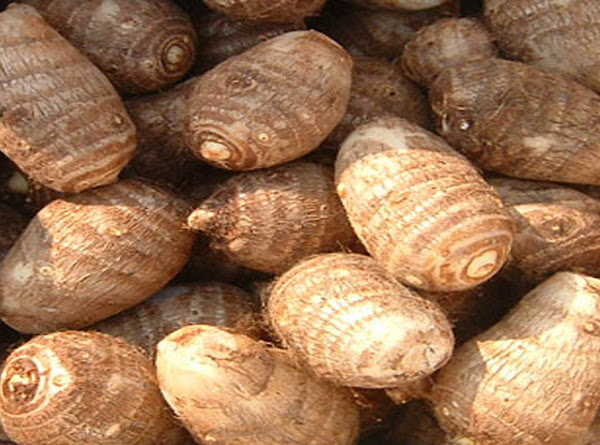
Taro Nutritional Benefits
Taro is very nutritious, and cooked taro is very healthy for humans. It is a great source of carbohydrates, fiber, fat, protein, vitamins and some essential minerals. According to healthline, one cup or 132 grams of cooked taro contains the following:
- Calories: 187
- Fiber: 6.7 grams
- Fat: 1 gram
- Protein: 1 gram
- Copper: 13% of the DV
- Potassium: 18% of the DV
- Phosphorus: 10% of the DV
- Magnesium: 10% of the DV
- Manganese: 30% of the DV
- Vitamin C: 11% of the DV
- Vitamin B6: 22% of the DV
- Vitamin E: 19% of the DV
As you can see, taro has good amounts of various nutrients such as fiber, potassium, magnesium and vitamins C and E.
Health Benefits of Taro
Taro is very nutritious and good for human health. Here we are trying to describe the top health benefits of consuming taro.
- Taro is a very good source of various nutrients such as fiber, vitamins C & E, potassium and magnesium.
- Taro roots contains fiber and resistant starch, which both slow digestion and reduce blood sugar spikes after meals.
- Taro root is a very good source of fiber and resistant starch. And both fiber and resistant starch help to lower cholesterol and reduce the risk of heart disease.
- Taro root contains polyphenols and antioxidants that may combat cancer growth and protect your body from oxidative stress.
- Taro is very high in fiber and resistant starch content. So you will feel full after eating taro, and it will reduce overall calorie intake and also increase fat burning. And all these will help you in weight loss and reduce body fat.
- Again the fiber and resistant starch in taro root are fermented by gut bacteria to form short-chain fatty acids, which may protect against colon cancer and inflammatory bowel disease.
- You can make different products from the taro root such as chips, hawaiian poi, taro tea, taro buns, taro cakes, and also add in soups and stews.
Advantages of Taro Farming Business
Like many other crop farming business, commercial taro farming has numerous advantages or benefits. Taro is a very important cash crop. Growing taro is very easy and you can make good profit from this business. Here we are trying to shortly describe the top advantages of taro farming business.
- Taro farming is very easy and simple, even the beginners can also start taro farming easily.
- Commercial production of taro is not a new business. People are already doing this business for making money.
- You will be able to consult with numerous existing farmers in your area to learn more about taro farming practically.
- Growing taro commercially is very easy and you will be able to start taro production with little experience.
- Taro can be cultivated in both irrigated and rain-fed areas.
- Taro can be grown in almost every countries around the world.
- Both demand and value of taro is good in the market. So, it’s a definitely profitable business.
- As commercial taro farming is highly profitable, so it can be a very good and profitable business idea for the educated but unemployed people.
- Production costs are relatively less, but the return is good.
- Taro can be processed into different types of food such as chips, hawaiian poi, taro tea, taro buns, taro cakes, and also add in soups and stews.
- Marketing taro and taro products is very easy. Because, taro and taro products already have very good demand and value in the market.
How to Start Taro Farming Business?
Starting commercial taro farming business is just like starting other crop farming business. As taro farming is very easy, so you will be able to earn very good profits easily. Growing taro is very easy and simple, even the beginners can also start this business. Here we are trying to describe more information about starting and operating this business from planting, caring to harvesting and marketing.
Select a Good Location
Taro plants grow well in a wide range of soil types with good organic matter. But the plants will grow well in well-drained loamy soils with the pH range about 5.5 to 7. Stony or rocky soils are not good for growing taro.
Prepare the Soil
A couple of deep ploughings are required to make the field soft textured so that the roots can grow easily and develop in the soil. Remove all types of weeds while preparing the soil. And apply as much organic contents (such as cow dung or compost) as you can while preparing the soil.
Climate Requirement for Taro Farming
In frost-free weather conditions, the taro root can be grown throughout the year. The taro crop thrives well in warm and moist conditions. Temperature between 25°C and 35°C is considered ideal for taro farming.
Best Time for Taro Cultivation
Taro can be grown successfully in both irrigated and rain-fed conditions. So, you can start growing taro at any time of the year.
Choose a Variety
There are many local and hybrid varieties of taro available to choose from. You can choose any variety depending on it’s availability in your area. And you should always consult with an expert farmer in your area for having better recommendation.
Propagation
Taro roots can be propagated in two ways. Chop the dark top section of the taro tuber into small pieces, leave these pieces for a day or so to allow surfaces to properly dry and replant. Offshoots are separated from the main plant when they are at least 15 to 18 cm in height.
Purchase Seeds
Taro seeds are highly available in the market. You can easily purchase seed taro from your local market.
Planting
Planting taro is very easy and simple, but you need to follow the right spacing. Generally the spacing between plants should be about 60 to 90 cm apart with 2 meters between rows.
Caring
The taro plants generally require less caring and other management. Although, taking additional caring will help the plants to grow well and produce more roots.
Fertilizing: Applying adequate organic fertilizers will help the taro plants to grow well. Apply as much farm yard manure as you can as part of the soil or main field preparation. Apply chemical fertilizers 2-3 times during the growing season as per the suggestion of an expert. Application of potash is very important in commercial taro farming business.
Watering: The soil should have enough moist with good drainage system for better growth of the plants. Frequent irrigation if required in dry or drought conditions.
Controlling Weeds: Controlling weeds is very important in commercial taro farming business. Weeds consume most of the nutrients from the soil and the taro plants suffer. Weeds can be controlled by hand pulling or cultivating with a hoe.
Pests & Diseases
Pests and diseases are generally less in taro farming business. Main pests of the taro plants are Aphids and Red Spider Mites which may attack taro root grown indoors. And leaf blight and downy mildew are the main diseases of the taro plants. Consult with your local agriculture extension office for controlling these pests and diseases.
Harvesting
Generally, the taro root crop attains maturity about 9-12 months after planting when the leaves turn in to yellow color and die down and also there is a slight lifting of the tubers can be observed.
Leaving tubers in the soil is recommended until they are needed, as the taro root doesn’t store for longer than one month.
Yield
It’s very tough to tell the exact number, because it depends on numerous factors. But on an average, under good cultivation management you can expect about 5 tonnes per hectare.
Marketing
Marketing taro root is very easy and simple. You can sell your products easily in the local market. Although, you should set your marketing strategies before starting this business.
These are the common steps and ways for starting and operating a successful taro farming business. Hope this guide has helped you! Good luck and may God bless you!

